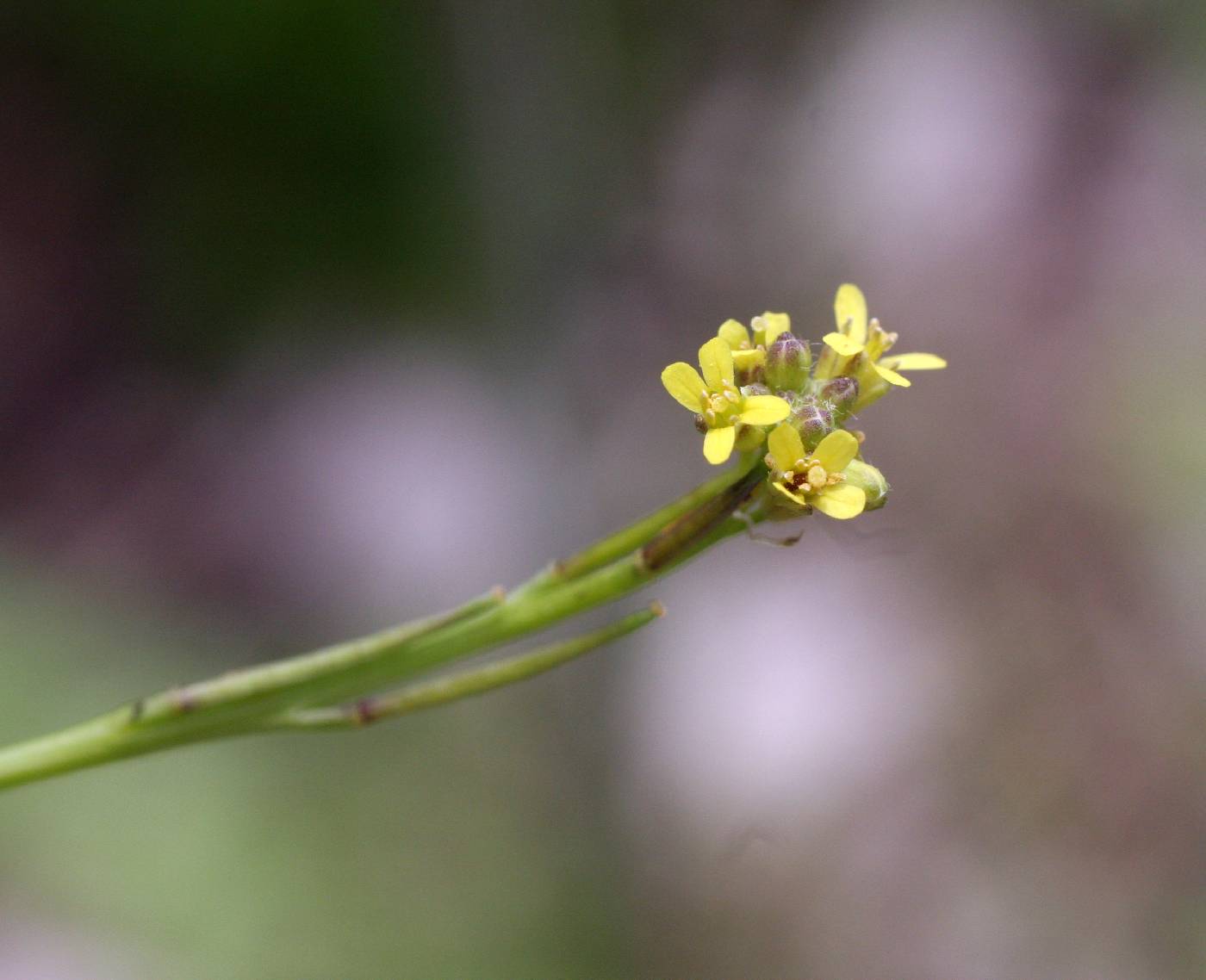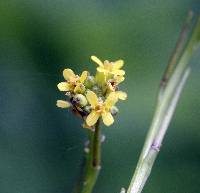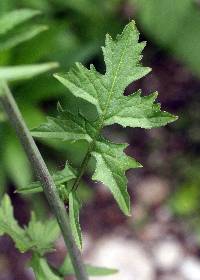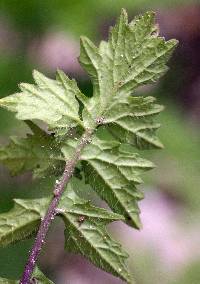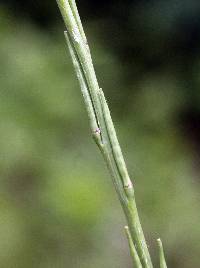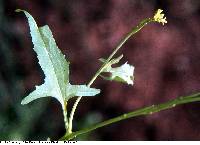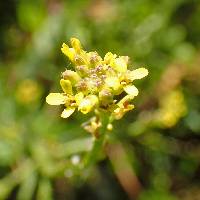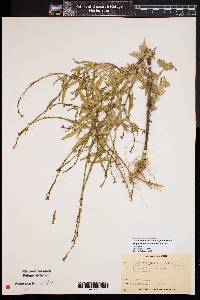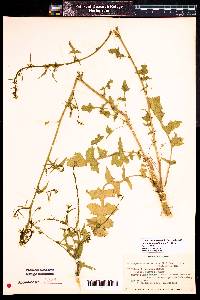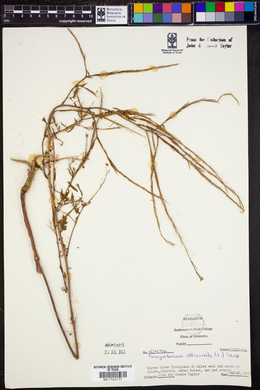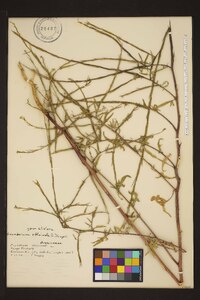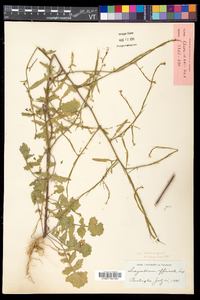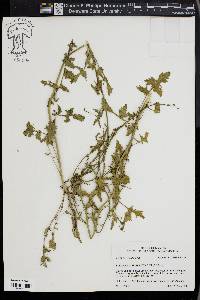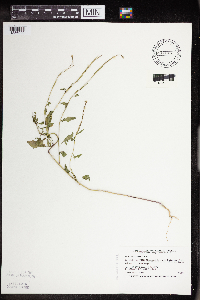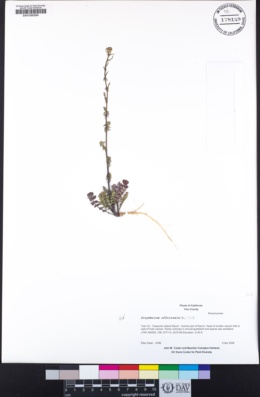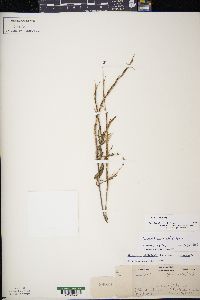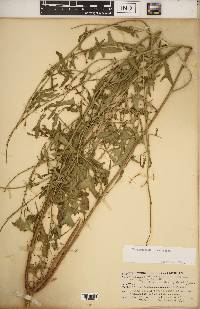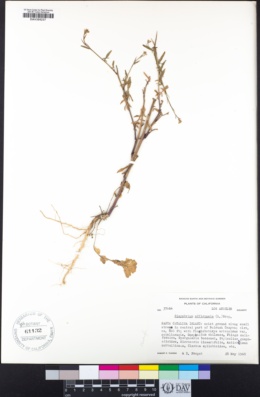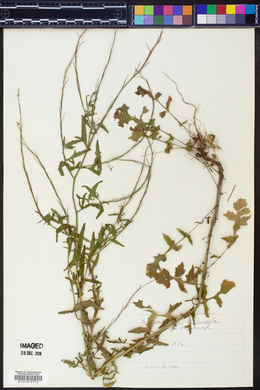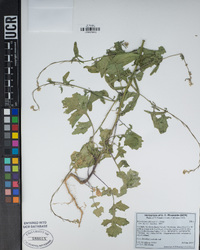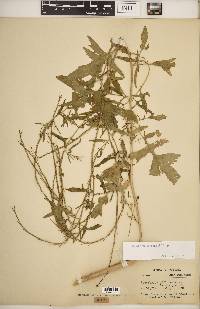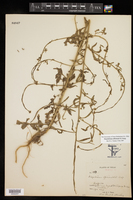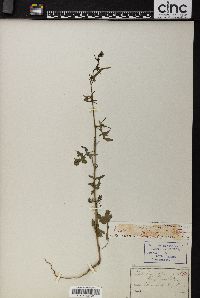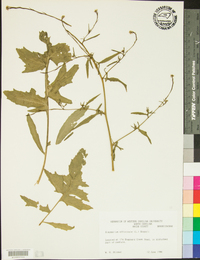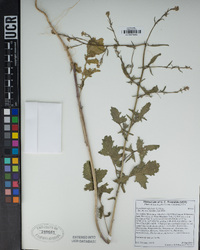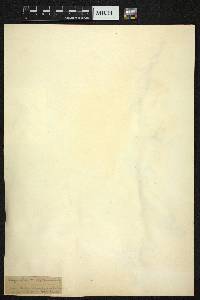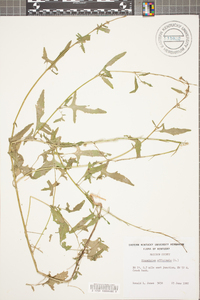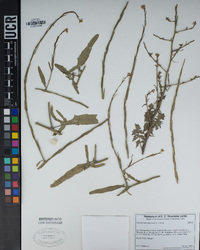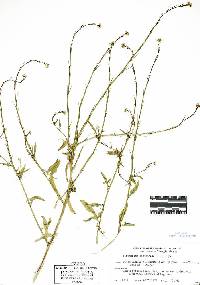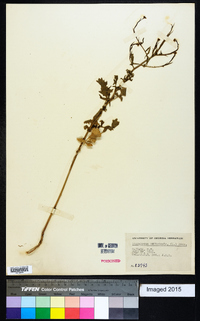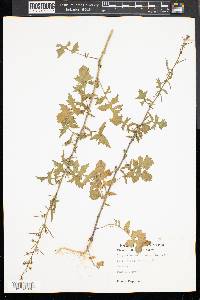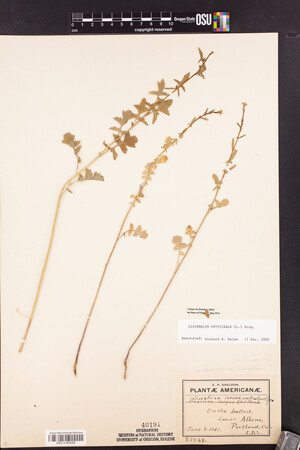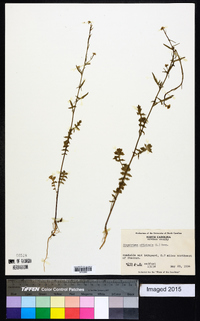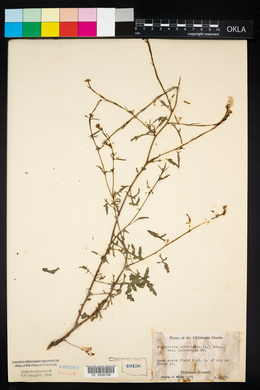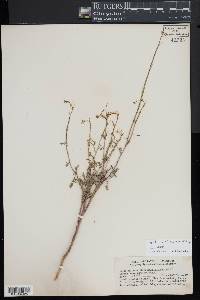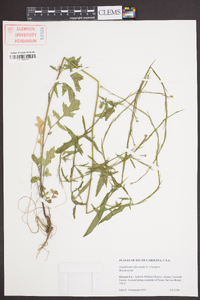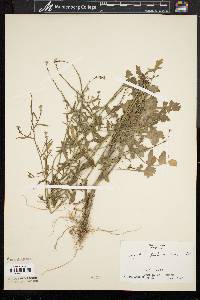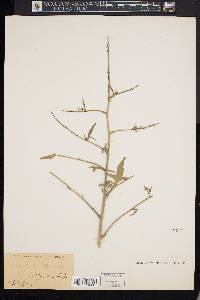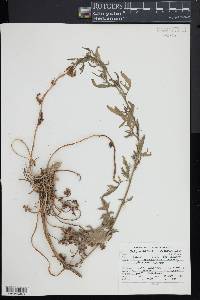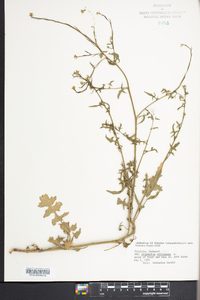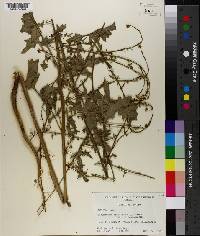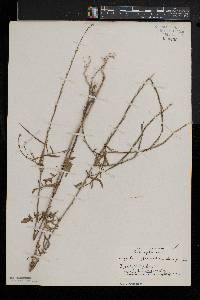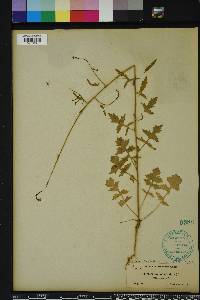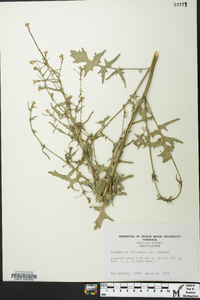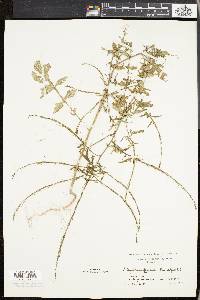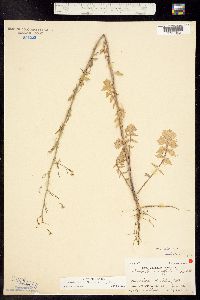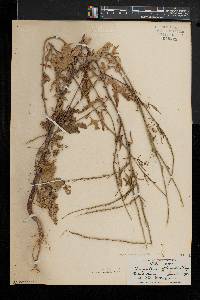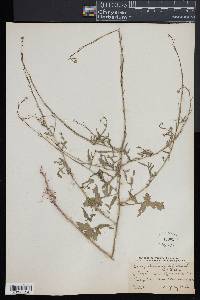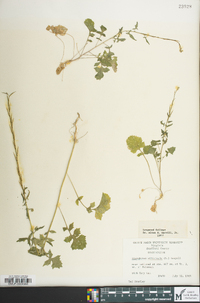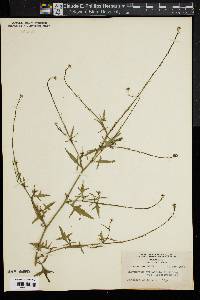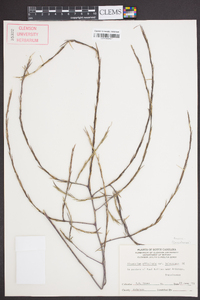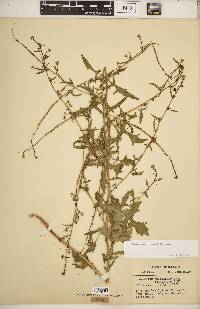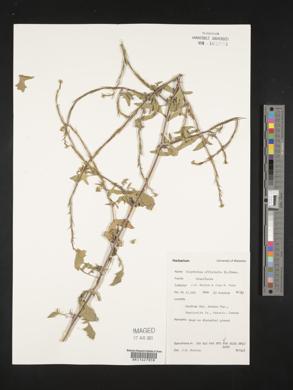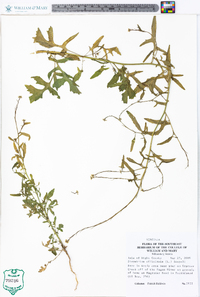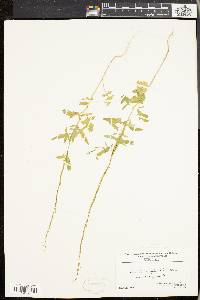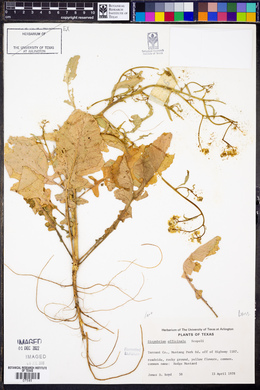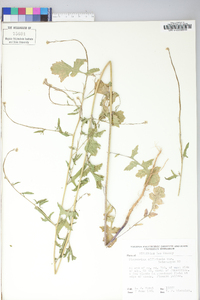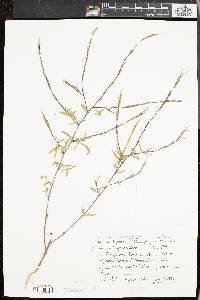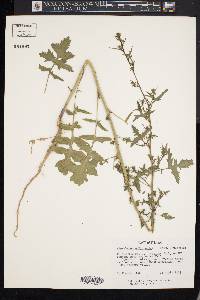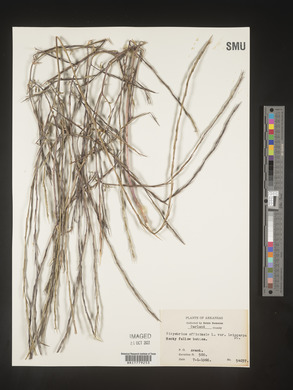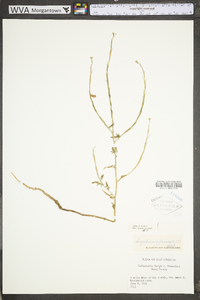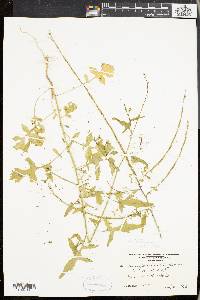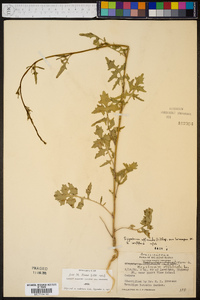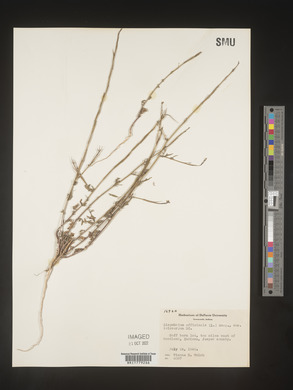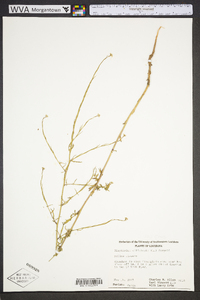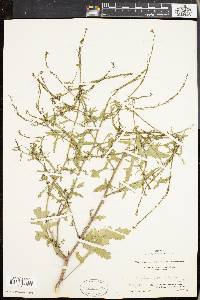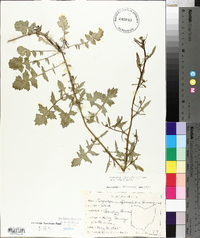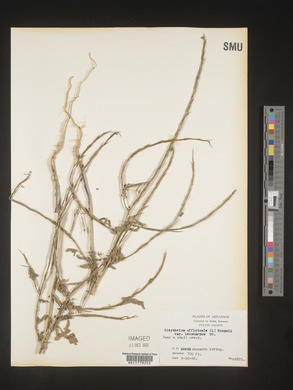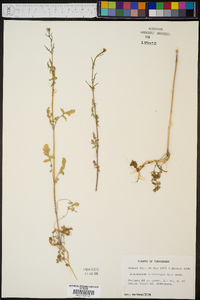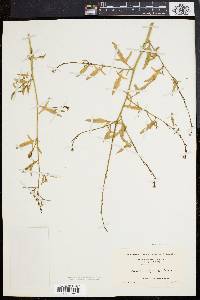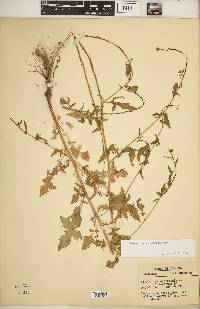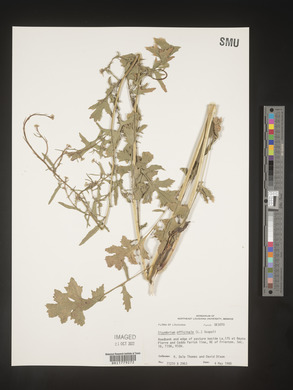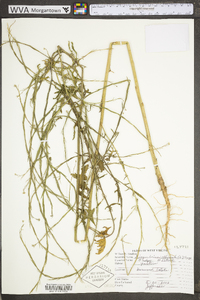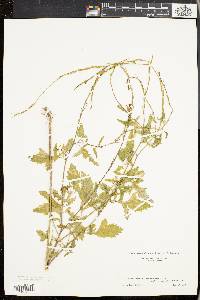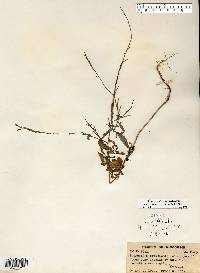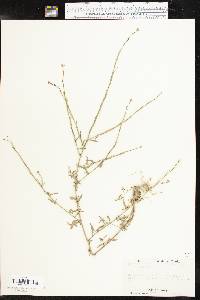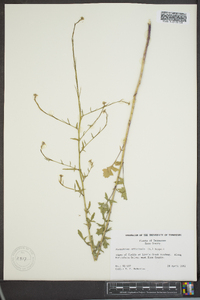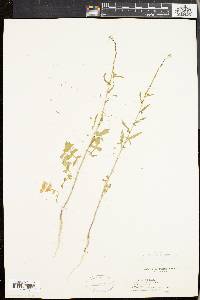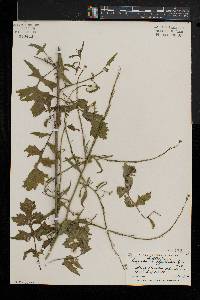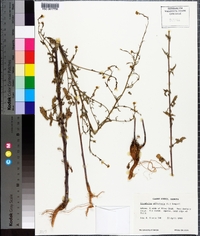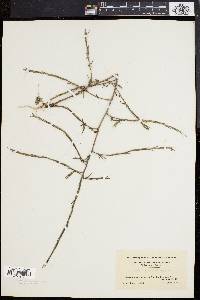
|
|
|
|
Family: Brassicaceae
Hedge-Mustard, more...hairypod hedgemustard, hedge mustard, hedge tumblemustard, hedgeweed, wild mustard, hedgemustard
[Chamaeplium officinale (L.) Wallr., moreErysimum officinale L., Sisymbrium officinale var. leiocarpum Dc., Sisymbrium officinale var. officinale] |
Annuals; glabrous or pubescent. Stems erect, branched distally, 2.5-7.5(-11) dm, usually sparsely to densely hirsute, (trichomes retrorse), rarely glabrate distally. Basal leaves usually rosulate; petiole (1-)2-7(-10) cm; blade broadly oblanceolate or oblong-obovate (in outline), (2-)3-10(-15) cm × (10-)20-50 (-80) mm, margins lyrate-pinnatifid, pinnatisect, or runcinate; lobes (2)3 or 4(5) on each side, oblong or lanceolate, smaller than terminal lobe, margins entire, dentate, or lobed, (terminal lobe suborbicular or deltate, margins dentate). Cauline leaves similar to basal; blade with lobe margins dentate or subentire. Fruiting pedicels erect, (appressed to rachis), stout, narrower than fruit, 1.5-3(-4) mm. Flowers: sepals erect, oblong-ovate, 2-2.5 × ca. 1 mm; petals spatulate, 2.5-4 × 1-2 mm, claw 1-2 mm; filaments (erect, yellowish), 2-3 mm; anthers ovate, 0.3-0.5 mm. Fruits (erect), subulate-linear, straight, slightly torulose or smooth, stout, (0.7-)1-1.4(-1.8) cm × 1-1.5 mm; valves glabrous or pubescent; ovules 10-20 per ovary; style (0.8-)1-1.5 (-2) mm; stigma slightly 2-lobed. Seeds 1-1.3 × 0.5-0.6 mm. 2n = 14. Flowering Apr-late Sep. Roadsides, fields, pastures, waste grounds, deserts; 0-2200 m; introduced; Alta., B.C., Man., N.B., Nfld. and Labr. (Nfld.), N.W.T., N.S., Ont., P.E.I., Que., Yukon; Ala., Alaska, Ark., Calif., Conn., Del., Fla., Ga., Idaho, Ill., Ind., Iowa, Kans., Ky., La., Maine, Md., Mass., Mich., Minn., Miss., Mo., Mont., N.H., N.J., N.Mex., N.Y., N.C., Ohio, Okla., Oreg., Pa., R.I., S.C., S.Dak., Tenn., Tex., Utah, Vt., Va., Wash., W.Va., Wis.; Europe; Asia; n Africa; introduced also in Central America, South America, Australia. Annual herb 30 cm - 0.8 m tall Stem: upright. Flowers: in stiff, branched clusters (racemes). Sepals four, ascending. Petals four, light yellow, 3 - 4 mm long. Fruit: a long, narrow pod (silique), closely appressed, 8 mm - 1.5 cm long, 1 - 1.5 mm wide at base, awl-shaped, sometimes hairy. Seeds in one row. Lower leaves: alternate, deeply pinnately divided, stalked, bases often large-lobed, toothed. Lateral segments oblong to egg-shaped. The terminal segments are rounded. Upper leaves: alternate, stalkless or nearly so, often non-toothed. Similar species: No information at this time. Flowering: May to mid-November Habitat and ecology: Introduced from Europe. A frequent weed of cultivated and waste ground, usually growing in high-nitrogen soils. Occurence in the Chicago region: non-native Etymology: Sisymbrium is the Ancient Greek name for various plants. Officinale means "sold in shops; official." This may apply to medicinal, edible, and otherwise useful plants. Author: The Morton Arboretum Erect, 3-8 dm; lower lvs petioled, deeply pinnatifid, the segments oblong to ovate or the terminal one rotund, angularly toothed, upper lvs sessile or nearly so and often entire; pet light yellow, 3-4 mm; racemes stiffly erect, the mature pedicels closely appressed, 2-3 mm, thickened above; frs closely appressed, subulate, 8-15 mm, 1-1.5 mm wide at base; 2n=14. Native of Eurasia, commonly established as a weed throughout most of the U.S. May-Sept. Gleason, Henry A. & Cronquist, Arthur J. 1991. Manual of vascular plants of northeastern United States and adjacent Canada. lxxv + 910 pp. ©The New York Botanical Garden. All rights reserved. Used by permission. From Flora of Indiana (1940) by Charles C. Deam A weed in pastures, waste places, and open woodland and along roads and railroads. My specimens, however, are all from the northern part of the state. [Plants with pubescent pods have been referred to var. leiocarpum.] This is a weed with habitats similar to those of [var. officinale] but it is much more common and is found throughout the state. …… Indiana Coefficient of Conservatism: C = null, non-native Wetland Indicator Status: N/A |
|
|
|
This project was made possible in part by the Institute of Museum and Library Services [MG-70-19-0057-19].
Powered by Symbiota

